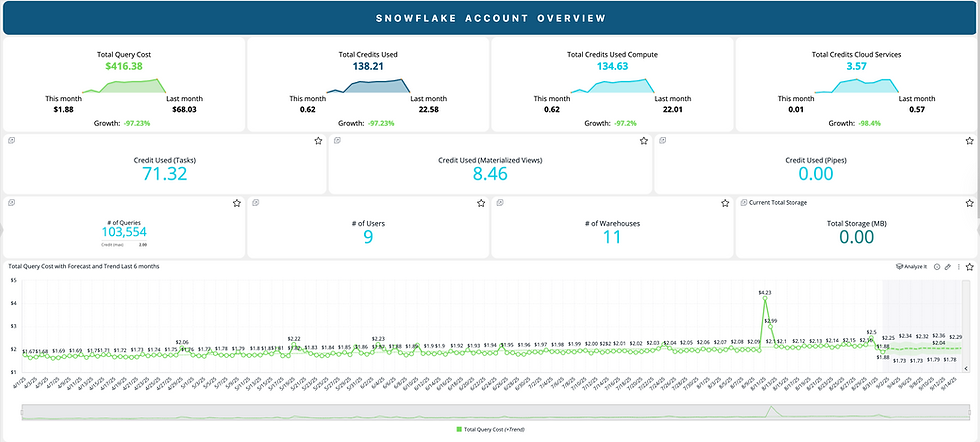How to Extend Self-Service Analytics in Sisense
- Ido Darnell
- Jun 12, 2023
- 3 min read
Businesses are eager to use data in more processes and decisions. Self-service analytics plays a pivotal role by allowing business users to leverage data without having to rely on specialists.
Sisense offers self-service BI and analytics – but mostly for users with the Designer role (rather than Viewers). This article explores ways in which you can extend Sisense's self-service aspect to all users, increasing data utilization and operational efficiency.
Self-Service Analytics in Sisense - Capabilities and Limitations
In the native Sisense environment, there are three types of users: Viewers, Administrators, and Designers. Each of these users has a different set of abilities when it comes to interacting with Sisense dashboards and widgets.
Designers have a lot of control over dashboards and widgets; whereas Viewers, as the name suggests, primarily consume data through visualizations that Designers create, and have little to no ability to customize the data they’re seeing. This is the case even when there is no real technical obstacle to giving Viewers more ability to interact with widgets, in terms of the data model in place.
Unfortunately, relying on Designers for even the smallest changes limits Viewers’ self-service functionality and can lead to longer iterations and an endless request backlog for Designers (e.g. to add or remove a certain widget, or to add a filter or control). Viewers cannot explore ad hoc questions or gain new insights beyond dashboard reporting on predefined metrics. Hence, they cannot truly leverage the full power of Sisense as a self-service BI tool, while Designers can easily get overwhelmed with support tickets and change requests.
Bridging the Gap Between Dashboard Viewers and Designers
When well-implemented, Sisense can be a powerful tool for ad-hoc analytics on large datasets, with flexible API connectivity that allows it to integrate within many applications and workflows. Giving more users access to these capabilities is key to increasing data utilization and data-driven decision making.
To address this issue, we set out to reduce the dependence of viewers on designers and enhance their ability to perform ad-hoc analysis, modify widgets, and even create custom dashboards and self-service reports.
We wanted to allow any Sisense user to independently discover insights and tailor dashboards to better align with their needs, as this would greatly increase the value organizations gain from Sisense. However, we also wanted organizations to maintain their single source of truth through consistent global formulas and data models.
Eventually we came up with…
4 Plugins That Push the Boundaries of Self-Service Analytics in Sisense
Our recently released Self-Service Analytics Power Up offers a variety of Sisense plugins to extend native functionality and provide deeper self-service capabilities to every Sisense user. Here are four of the most interesting ones:
Self-Service Dashboard: Our newest and most advanced self-service plugin allows viewers to create and design their own dashboards on a dynamic grid, using prebuilt widgets. Users can create ad-hoc data stories independently, while reducing the amount of support noise and change requests. This ultimately facilitates a smooth flow of operations, decreases delivery time and feedback iterations, and reduces the risk of exposing viewers to the data schema.
Widget Controller: The Widget Controller empowers viewers with self-service Measure, Dimension, Break-by, Date Granularity, and Chart Type switchers all in one place. It also reduces the noise on dashboards since there are multiple KPIs, dimensions, and ad-hoc adjustments to choose from in a single widget (rather than separate controllers).
Advanced Input Parameters: With this plugin, Viewers can actively interact with data and conduct what-if analyses rather than remaining passive consumers. Designers can create various input boxes that enable viewers to add data on the fly, without having to add or modify Elasticube tables. The Designer can also decide on predetermined values that Viewers can choose from.
Expandable Pivot: This plugin gives viewers better ways to work with data in Excel-style pivot tables. Users can change the pivot structure through simple drag-and-drop actions, enabling unique custom views to be retained for each viewer. With the ability to drill down, expand rows and columns, the Expandable Pivot table offers an enhanced user experience for ad-hoc analyses, without losing sight of the parent values.
The bottom line
Combining these plugins allows a Viewer to:
Create their own dashboard based on the widgets most relevant to their role
Switch measures, chart types, and break-by dimensions in any widget in their dashboard
Perform what-if analysis and test hypotheses by inputting new data
Use pivot tables to create new views and reports
This is a massive leapfrog compared to native capabilities which are basically limited to viewing data!
Get Started with Sisense Self Service Analytics Today
If you’re looking to get more out of Sisense, our team can help. Get in touch today for a free trial of the Self Service Power Up for Sisense.




Comments